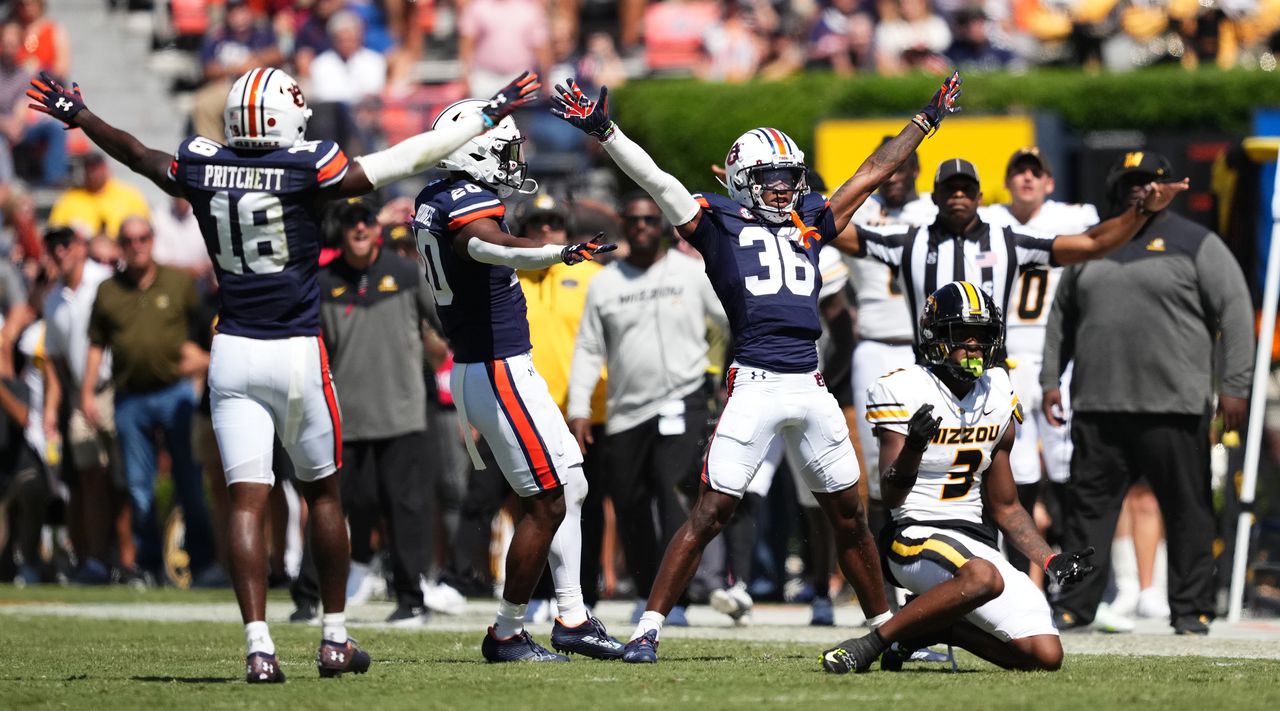A closer look at Auburn’s improved pass defense in SEC play
Auburn’s pass defense got off to an inauspicious start to the year, but the Tigers’ secondary has clamped down on opponents in recent weeks.
Blown coverages and lost one-on-one battles down the field marred the first few weeks of the season for Auburn’s secondary, which was 73rd nationally in pass efficiency defense (129.03) and 81st among FBS teams in passing defense (234.7 yards per game) through its first three games. Since the start of conference play, though, things have been trending in the right direction for the Tigers’ defensive backs.
“Yeah, I think those guys are flying around, number one,” Auburn coach Bryan Harsin said. “I think they’re around in coverage, around the receivers. They’re not giving those guys many opportunities just to be wide open or cutting the guy loose. So, we’ve gotten better at that.”
Read more Auburn football: Where Bryan Harsin’s 2022 salary, buyout rank nationally, in the SEC
“They’re my enemy until the end of the game”: Two Auburn transfers set to greet Tigers at Ole Miss
Does Auburn’s offense have an identity crisis at midpoint of season?
Through its first three games against Mercer, San Jose State and Penn State, Auburn’s defense allowed opponents to complete 62.6 percent of their passes, allowed two passing touchdowns and failed to force any interceptions. During that stretch, the Tigers surrendered 17 passes of at least 15 yards, including 11 of 20 yards or more.
In its last three games against SEC opponents, though, Auburn has cut down on that number, giving up 10 passes of 15-plus yards, with six of them going for 20 yards or more. In SEC play, Auburn’s pass defense is first in the league in fewest yards allowed (157.3 per game), third in pass efficiency defense (102.01), fifth in opponent completion percentage (56.1 percent) and third in yards allowed per pass attempt (5.8).
The Tigers’ pass defense was particularly stingy against LSU and during the first half of last weekend’s game against Georgia. Auburn limited LSU to just 85 passing yards on 10-of-26 passing (38.5 percent) in what was the program’s fewest passing yards allowed in an SEC game since 2018 against Mississippi State (69). It was also the lowest completion rate allowed by Auburn in an SEC game since 2017 against Mississippi State (35.1 percent), and the fewest yards allowed per pass attempt (3.3) in an SEC game since 2009 against Kentucky (3.4).
Then in the first half against Georgia, Auburn held Stetson Bennett to just 7-of-13 passing for 25 yards. Though Bennett turned things around in the second half to finish with a solid stat line in the blowout win, thanks to the Bulldogs’ dominant run game opening things up for the passing attack, the Tigers’ defense still contained things on the back end.
Auburn’s pass defense has also shown marked improvement on third downs since the start of conference play. The Tigers allowed nonconference competition to convert 44 percent of third downs through the air (11-of-25), as their first three opponents combined to complete 18-of-25 (72 percent) of their pass attempts for 159 yards and two touchdowns on third downs. Over the last three weeks, SEC teams have converted just 6-of-26 (23 percent) third downs through the air, completing 12-of-26 passes (46.1 percent) for 110 yards and no touchdowns.
Most notably, though, Auburn’s defense has not surrendered a passing touchdown since the opening week of the season, when Mercer’s Fred Payton threw two touchdowns in Jordan-Hare Stadium. The Tigers’ defense has gone 145 consecutive pass attempts without allowing a touchdown, and it’s tied with Illinois for fewest passing touchdowns allowed in the FBS this season. Auburn has allowed one fewer passing touchdown than both Alabama and Kentucky, who have given up three each this year.
While Harsin had praise for his secondary’s improvement in recent weeks, he also gave plaudits to Auburn’s defensive line for doing a better job of providing pressure on opposing quarterbacks. It goes back to what multiple defenders — including cornerback Jaylin Simpson and edge Derick Hall — have repeated several times since the preseason: Rush and coverage go hand in hand, and one doing well makes life easier on the other.
“I think our D-line, I think some of the pressures, too, that we’ve put on the quarterback have helped,” Harsin said. “They’re not just standing back there and scanning the whole field and waiting for a guy to open up. So, I think it’s a combination of getting to the quarterback and also your secondary doing a good job. And on some of the scramble stuff, too, we’re plastering better, we’re covering better, we’re getting better in the back end. I think that’s one of the reasons why we’ve been able to have some of those numbers.”
Tom Green is an Auburn beat reporter for Alabama Media Group. Follow him on Twitter @Tomas_Verde.
